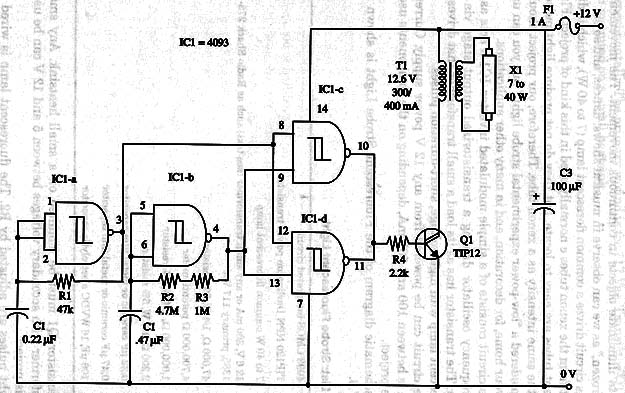Fluorescent tubes are easy to locate, but they do not produce light pulses with the same intensity as a xenon tube. Therefore, our project should be considered a “low-power experimental strobe light,” but you can use it in your home, for decoration, and in many other applications.
The circuit consists of a simple modulated inverter. IC1-a acts as a low-frequency oscillator driving a transistorized output stage via a buffer. The transistor has as its load a small transformer that drives a fluorescent lamp with high-voltage, short-duration pulses.
The circuit can be powered from any 12 V power supply. Current drain is between 100 and 500 mA, depending on the components used in the project.
A schematic diagram of the Fluorescent Strobe Light is shown in Fig. 1.

Transistor Q1 must be mounted on a small heatsink. Any small transformer with secondary voltages between 5 and 12 V can be used in this project.
Light pulses are adjusted by R2. The fluorescent lamp is wired as far as you want from the device, but you have to take care with the wire insulation. This part of the circuit is submitted to high voltages, and this represents a possibility of serious shock.
IC1 - 4093 CMOS integrated circuit I
Q1 - TIP120 NPN Darlington power transistor
X1 - 7 to 40 W common fluorescent lamp
T1 - 12.6 V, 300 mA or any small transformer (see text)
R1 - 47,000 Ω, 1/4 W, 5% resistor
R2 - 4,700,000 Ω - potentiometer
R3 - 1,000,000 Ω, 1/4 W, 5% resistor
R4 - 2,200 Ω, 1/4 W, 5% resistor
C1 - 0.22 µF ceramic or metal film capacitor
C2 - 0.47 µF ceramic or metal film capacitor
C3 -100 µF, 16 WVDC electrolytic capacitor




